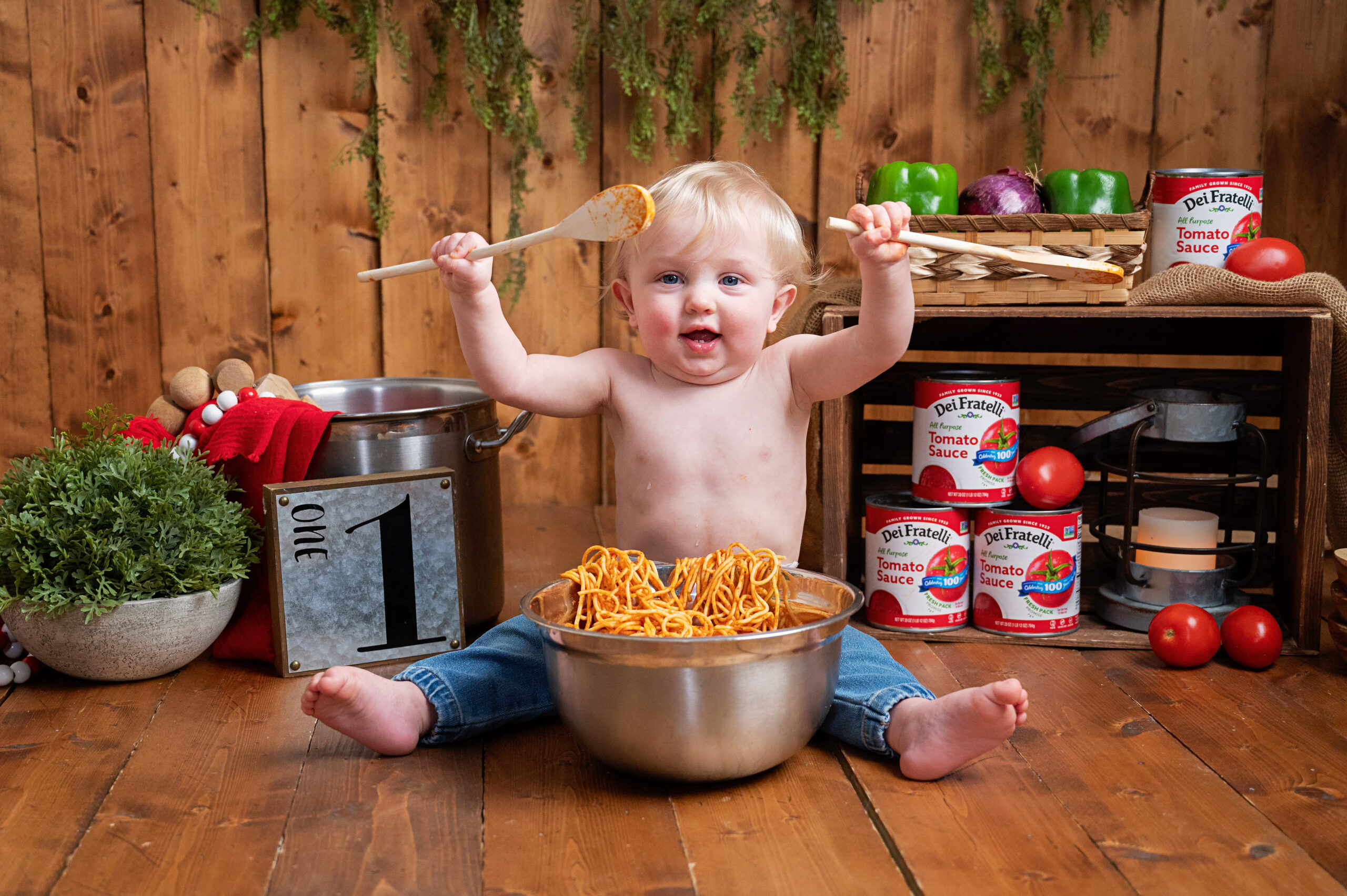Cuyahoga Falls Baby Photographer
Starting solids is such a fun (and messy!) milestone. Watching your baby taste new foods—sometimes with excitement, sometimes with confusion—is one of those parenting joys that never gets old.
Before we can capture your cake smash, it’s time to introduce solids! If you’re thinking about making your own baby food, you’re in the right place. I loved making all of my own baby food for our kids, so I thought I would share some tricks I learned over the years! Not only is it a great way to know exactly what’s going into those tiny tummies, but it can also save you money, reduce waste, and help your little one explore a variety of flavors and textures.
The best part? It doesn’t have to be complicated. Promise.
Let’s break it down, from first purees to texture transitions, with easy tips to make your homemade baby food journey smooth and stress-free.
🥄 When to Start baby food
Most babies are ready to start solids around 6 months, but always check with your pediatrician first. Signs of readiness include:
Sitting up with support
Showing interest in food
Losing the tongue-thrust reflex
🥕 First Foods: Smooth & Simple Purees
In the beginning, go with single-ingredient, smooth purees to keep things gentle on their little digestive systems and help watch for allergies.
Great first puree options:
Steamed carrots
Cooked sweet potatoes
Mashed avocado
Steamed apples or pears
Banana (no cooking needed!)
Tips for great purees:
Steam or bake veggies until soft, then blend with breast milk, formula, or a bit of water until silky smooth.
Start with small batches—you can always make more!
Freeze extras in an ice cube tray for easy single-serve portions.
👉 Pro Tip: Use silicone ice cube trays with lids. Once frozen, pop out the cubes and store them in labeled freezer bags. Instant meal prep win! Don’t have a silicone tray or spare ice cube tray? I loved using this Pampered Chef Medium scoop for a convenient 2 tablespoon option.
🍌 Transitioning to Thicker Textures (Around 7–9 Months)
Once baby has mastered smooth purees, you can start offering thicker textures and soft mashable foods to help develop their oral motor skills.
Try:
Lumpy mashed avocado or banana
Oatmeal with mashed fruit
Lentil or veggie soup blended less
Quinoa or rice mixed with pureed veggies
Flaked soft fish or shredded chicken
Tip: Mix and match flavors to encourage variety! Think:
Sweet potato + apple
Carrot + lentils
Pear + spinach
Chicken + zucchini
🍽 Finger Foods & More Texture (Around 9–12 Months)
Now it’s time for soft finger foods and chunkier textures. Think bite-sized, mashable foods that baby can explore and self-feed.
Ideas:
Steamed broccoli florets
Sliced ripe avocado
Soft scrambled eggs
Toast strips with nut butter (thinly spread)
Cooked pasta with veggie sauce
Tiny cubes of soft cheese or tofu
👉 Keep in mind: This stage is messy, and that’s totally okay! Letting baby squish and play is part of the learning process.
🧂 Seasoning & Flavors: Yes, Please! (In Moderation)
You don’t have to stick with bland. Babies actually love flavor—just skip the salt and added sugar. Safe, natural flavor boosters include:
A pinch of cinnamon or nutmeg
A sprinkle of turmeric
A little garlic or onion powder
A dash of cumin or mild curry powder
Fresh herbs like basil or parsley
Start small and see what your baby likes—you might be surprised!
🥣 Must-Have Tools for Homemade Baby Food
You don’t need fancy gadgets, but a few basics make things easier:
Steamer basket or pot
High-speed blender or food processor
Ice cube trays or small storage containers
Baby spoons and bibs (you’ll need lots of bibs)
✅ Quick Tips for Success
One new food at a time: Wait 2–3 days before introducing another to check for allergies.
Make big batches: Freeze extras to save time.
Label everything: Date and label your frozen cubes so you don’t forget what’s what.
Go with baby’s pace: Some days they’ll eat a lot, other days barely a bite—and that’s okay.
💛 Final Thoughts
Making homemade baby food doesn’t have to be perfect—just made with love. Whether you’re whipping up silky carrot puree or offering steamed broccoli for the third time (and getting the same “no thanks” face), every bite is part of your baby’s food journey.
Be sure to chat with your pediatrician to map out your baby’s food plan. Once you feel comfortable with introducing solids, go for it! Trust your instincts, have fun in the kitchen, and take lots of photos of those messy, happy faces. You’re doing a great job!

leave a comment